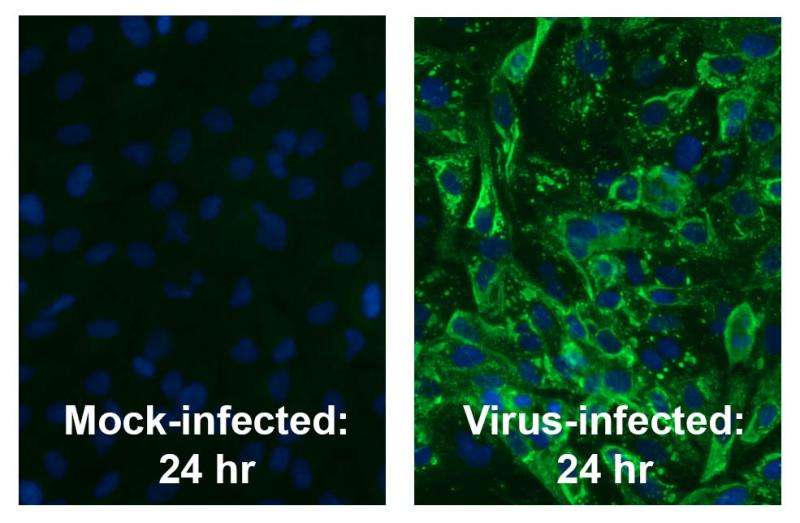Super cell to contain deadly Ebola virus discovered in Australia

A super cell in the eye has been discovered that can stop the deadly Ebola virus.
Researchers from Flinders University, Australia's CSIRO and Emory University have discovered a cell in the eye that contains the spread of Ebola, giving hope to the 28, 816 people who have been infected since 2013.
According to World Health Organisation the average Ebola virus fatality rate is 50 per cent.
The Ebola virus is known to live in the eyes of survivors who suffer from uveitis, a common and serious symptom of the virus, for up to a year post-infection.
The scars on the eyes of Ebola survivor Dr Ian Crozier led the researchers to discover that retinal pigment epithelial cells prevent the virus spreading from the eyes.
Flinders researcher Professor Justine Smith said using RNA sequencing (RNA-SEQ), the researchers found a surprising and strong anti-viral reaction that can keep Ebola from spreading despite its ability to multiply in the retinal pigment epithelial cells.
"RNA-SEQ can look at all the molecules a cell turns on. We took an infected cell and an uninfected cell to compare and identify the strong anti-viral response," she said.
The retinal super cells have molecules that can limit the white blood cells to fight infection. By dampening the immune response the eye is protected while the virus is contained.
Prof Smith said further research could lead to the management and control of the Ebola Virus.
"While it might appear a bad thing that the eyes can harbour Ebola, this is not necessarily true if what we are looking at is actually a very clever containment of the virus."

















